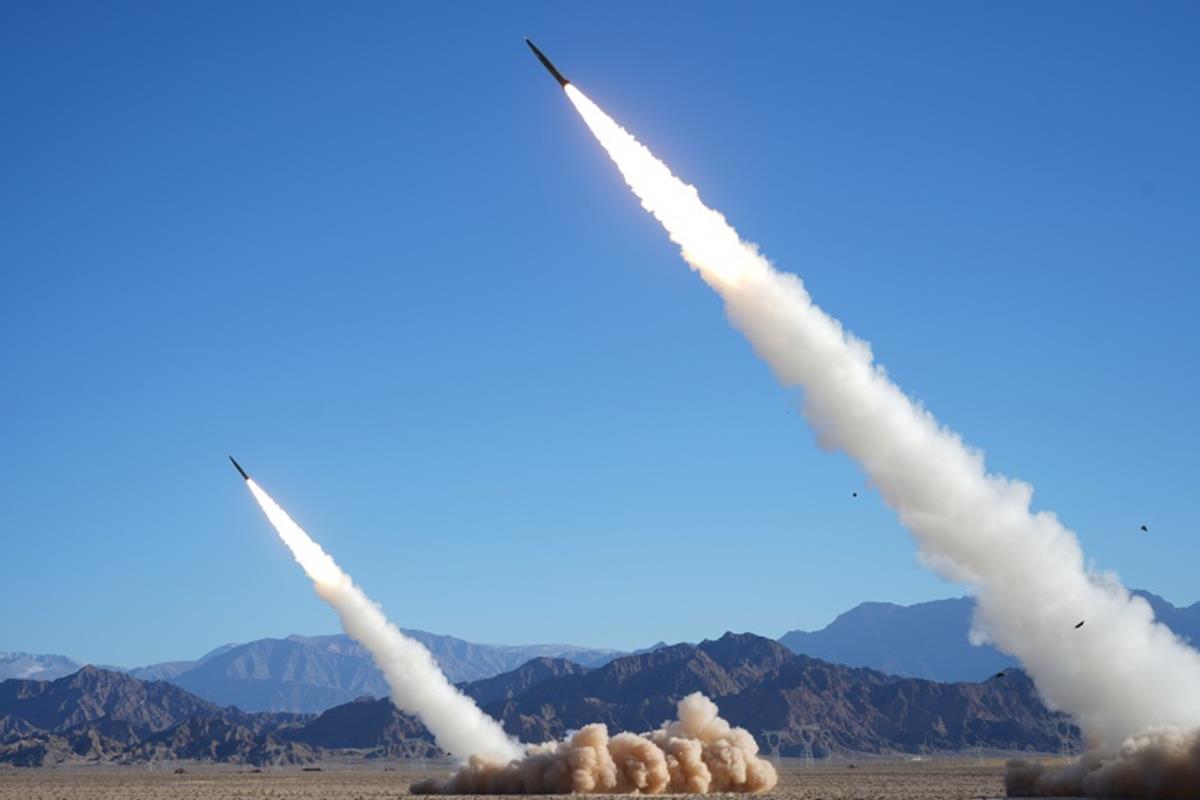
Desert Storm: China's Gobi Missile Salvo A Message For US
This month, the South China Morning Post (SCMP) reported that China's People's Liberation Army (PLA) recently conducted an unprecedented missile defense test in the Gobi Desert, showcasing its advanced capabilities and strategic resolve amidst intensifying global tensions.
The exercise involved the simultaneous launch of 16 ballistic missiles toward a single target, testing a new dual-band (S/X) phased-array radar system designed to counteract saturation attacks, according to a PLA Unit 63623 study cited in the SCMP report.
This radar system, achieving 100% detection and tracking success, demonstrated its ability to differentiate between warheads and decoys while maintaining precise threat prioritization.
The technology mirrors, yet rivals, the US Navy's USNS Howard O Lorenzen system, though China's test marked the first live-fire demonstration of this kind.
Analysts note that this achievement marks a significant leap in China's ability to counter sophisticated threats, such as hypersonic glide vehicles (HGVs) and missiles equipped with countermeasures. The large-scale test, unparalleled outside of wartime scenarios, underscores China's commitment to bolstering military readiness.
Ballistic missiles are among the most costly weapon systems, so the PLA's willingness to undertake such an expensive endeavor reflects a strategic emphasis on deterrence, particularly in potential conflicts over Taiwan and the South China Sea.
China's autonomous missile production further complements this shift, signaling its intent to sustain and expand its arsenal.
Examining the drivers of China's ballistic missile defense (BMD) capability buildup, Jacob Mezey notes in a September 2024 article for the Atlantic Council that China's BMD program was initially rooted in Cold War-era fears of US preemption.
Its development now, however, serves multiple purposes, namely: shielding leadership and nuclear forces from limited strikes, countering India's expanding missile arsenal and supporting a potential launch-on-warning posture.
Mezey notes that BMD research also complements China's anti-satellite (ASAT) capabilities, providing dual-use technological benefits.

Legal Disclaimer:
MENAFN provides the
information “as is” without warranty of any kind. We do not accept
any responsibility or liability for the accuracy, content, images,
videos, licenses, completeness, legality, or reliability of the information
contained in this article. If you have any complaints or copyright
issues related to this article, kindly contact the provider above.
Most popular stories
Market Research

- Snail, Inc. Announces Intent To Explore Proprietary USD-Backed Stablecoin
- New FBS Analysis Highlights Liquidity Trends And Market Phases In Crypto
- Nominis Wins 'Product Innovation Award' At Mastercard Fintech Finals In Berlin
- BTCC Exchange Reports Remarkable Q2 2025 Performance With $957 Billion Trading Volume
- Novaex Launches With A Security-First Crypto Trading Platform Offering Deep Liquidity And Institutional-Grade Infrastructure
- Bitget Launches CUSDT Perpetual Futures With 20X Leverage And Bot Trading Support
























Comments
No comment